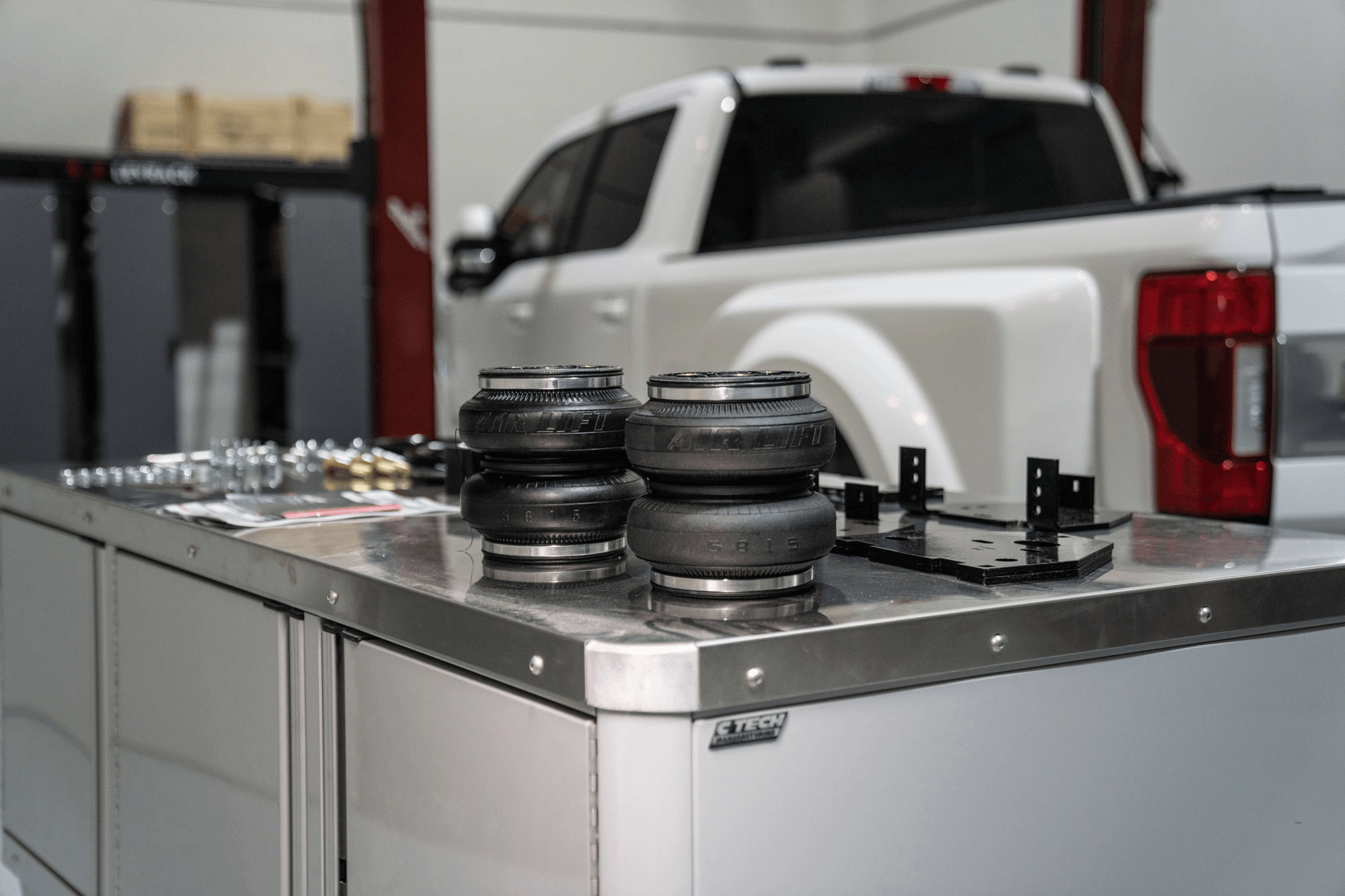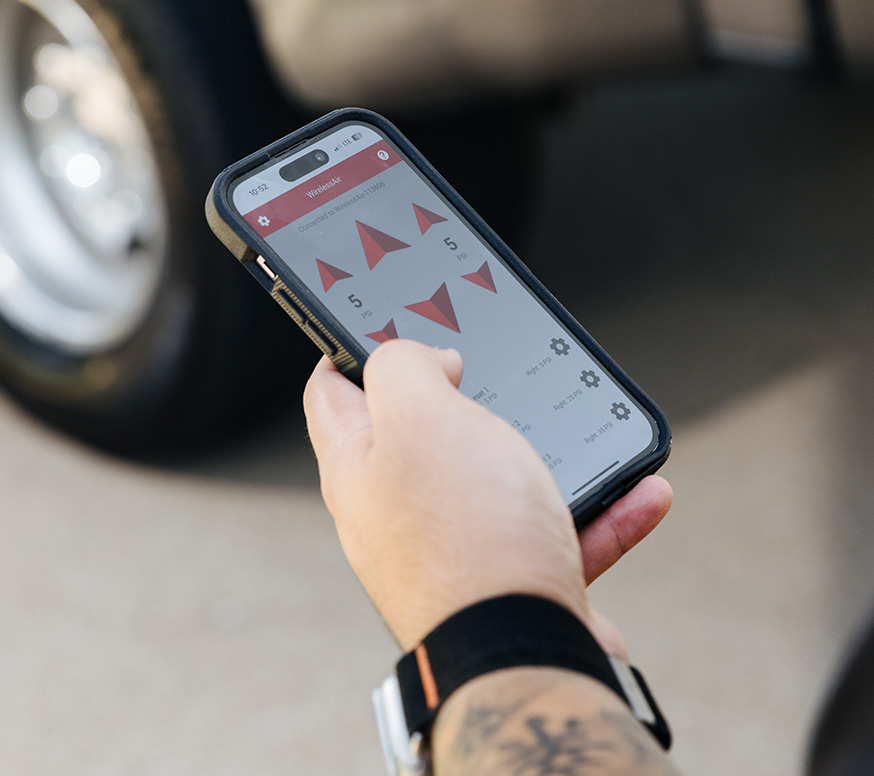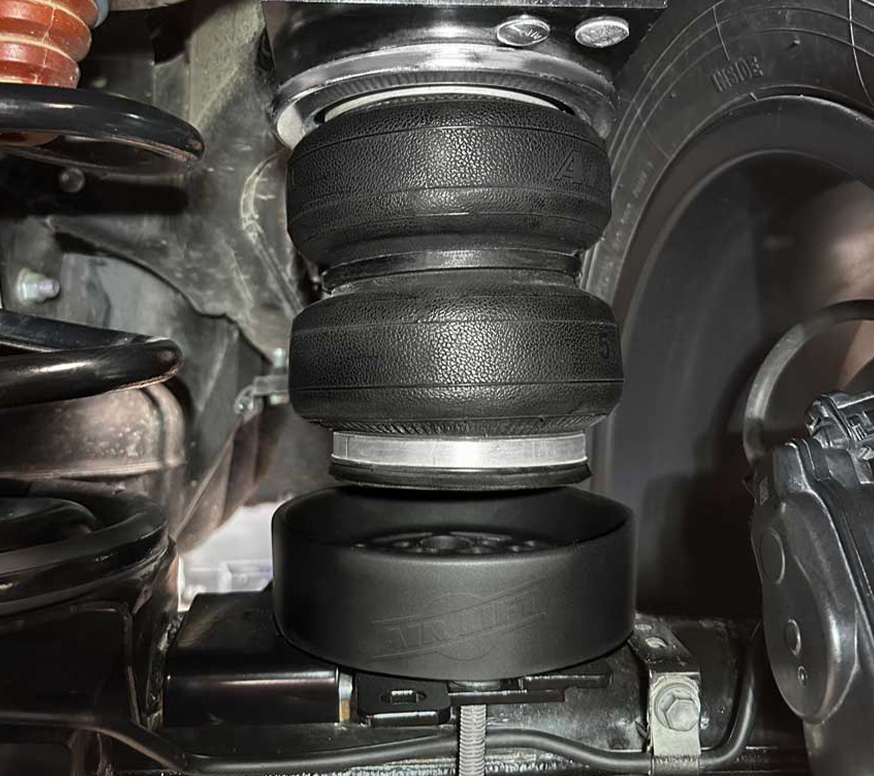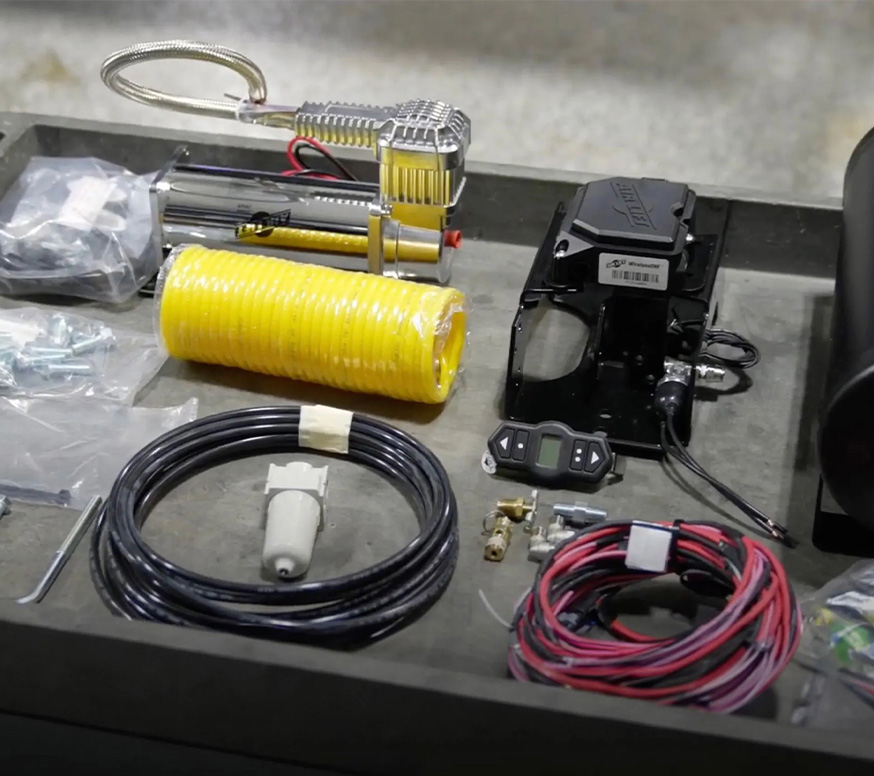
Finding the Correct Air Pressure
6/2/2014
Air Lift air springs are designed to help correct a number of different problems that occur as a result of carrying heavy loads with your vehicle, including squat, trailer sway, body roll, bottoming out, and poor headlight aim.
A common question we receive is, “How much air should I put in the air springs?!” When answering this question, we always want to remind you that towing or hauling different loads will cause different problems.
While we can give you some advice, determining the proper air pressure is something that really comes down to you and your passengers.
Finding the right air pressure for your vehicle and load really comes down to three things: level vehicle, ride comfort, and stability.
Level Vehicle
Front-to-back and left-to-right, a level vehicle is safer, feels better to drive, and handles better overall, which can all be achieved when the vehicle is returned to normal ride height.
The most precise way to return the vehicle to normal ride height is to take measurements at each wheel well of the vehicle when the vehicle is unloaded – measuring from the center hub to the bottom of the wheel well.
Then, when the vehicle is loaded, adjust the pressure in the air springs until you can achieve similar measurements.
An easier, yet less precise, method is to adjust the air pressure until your headlights are aimed where they are supposed to be.
Ride Comfort
Adjusting the air pressure up or down will change the ride quality of your vehicle, but determining which way to adjust is sometimes the question.
If you’re experiencing a harsh ride, it can be the result of either too much pressure or not enough pressure. It’s a delicate balance!
If you’re experiencing a bouncy vehicle, it’s most likely the result of a weak suspension.









